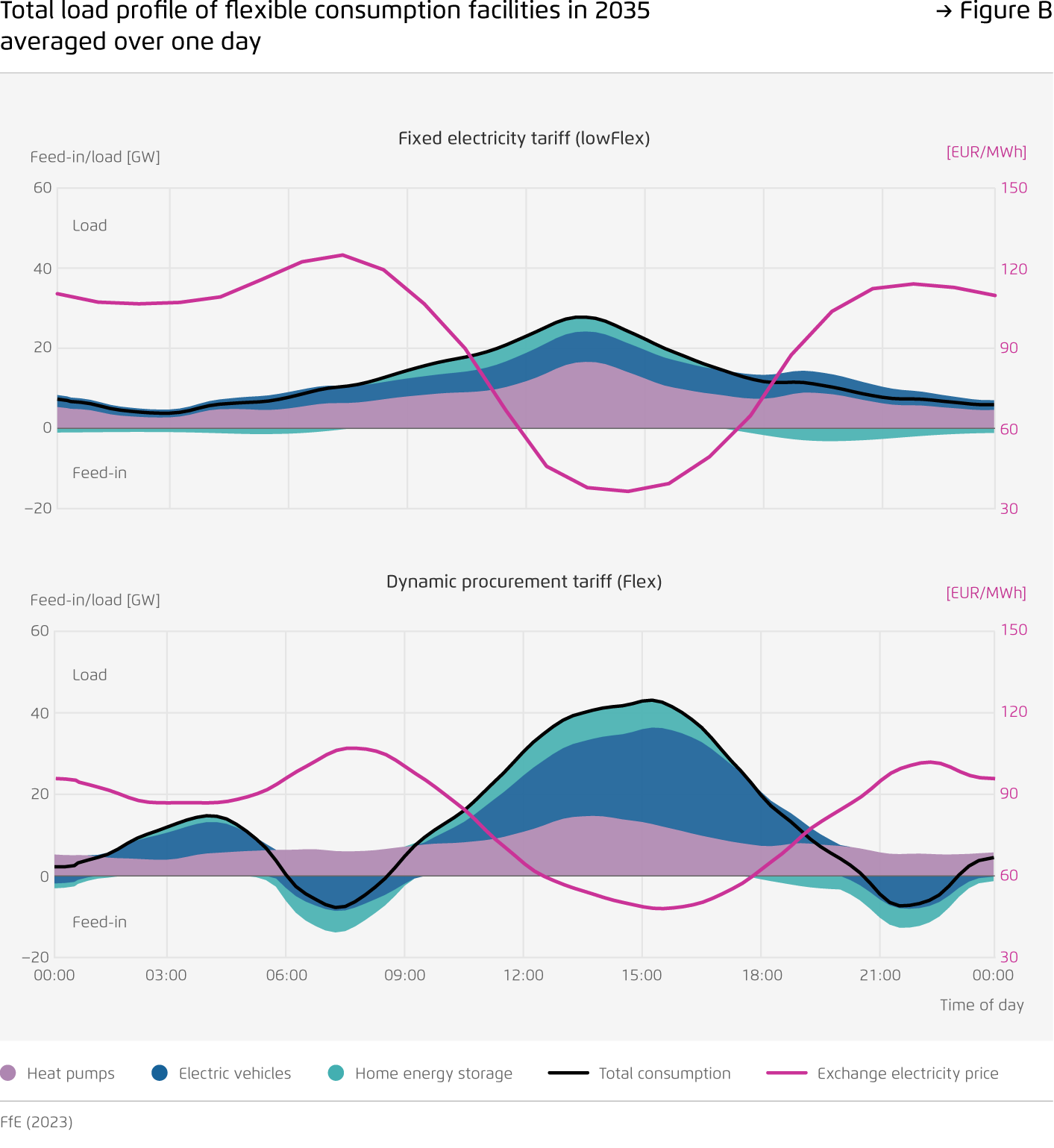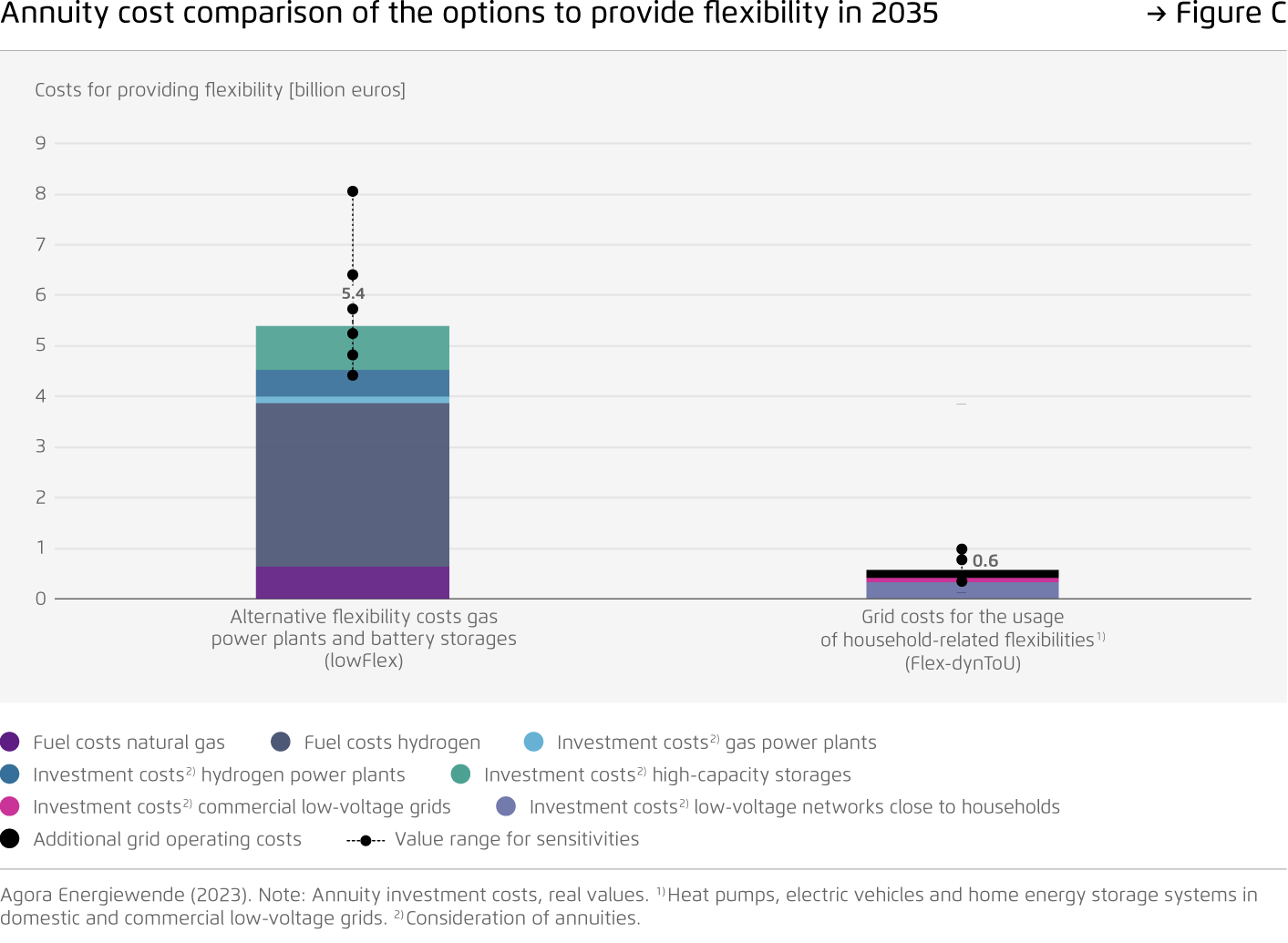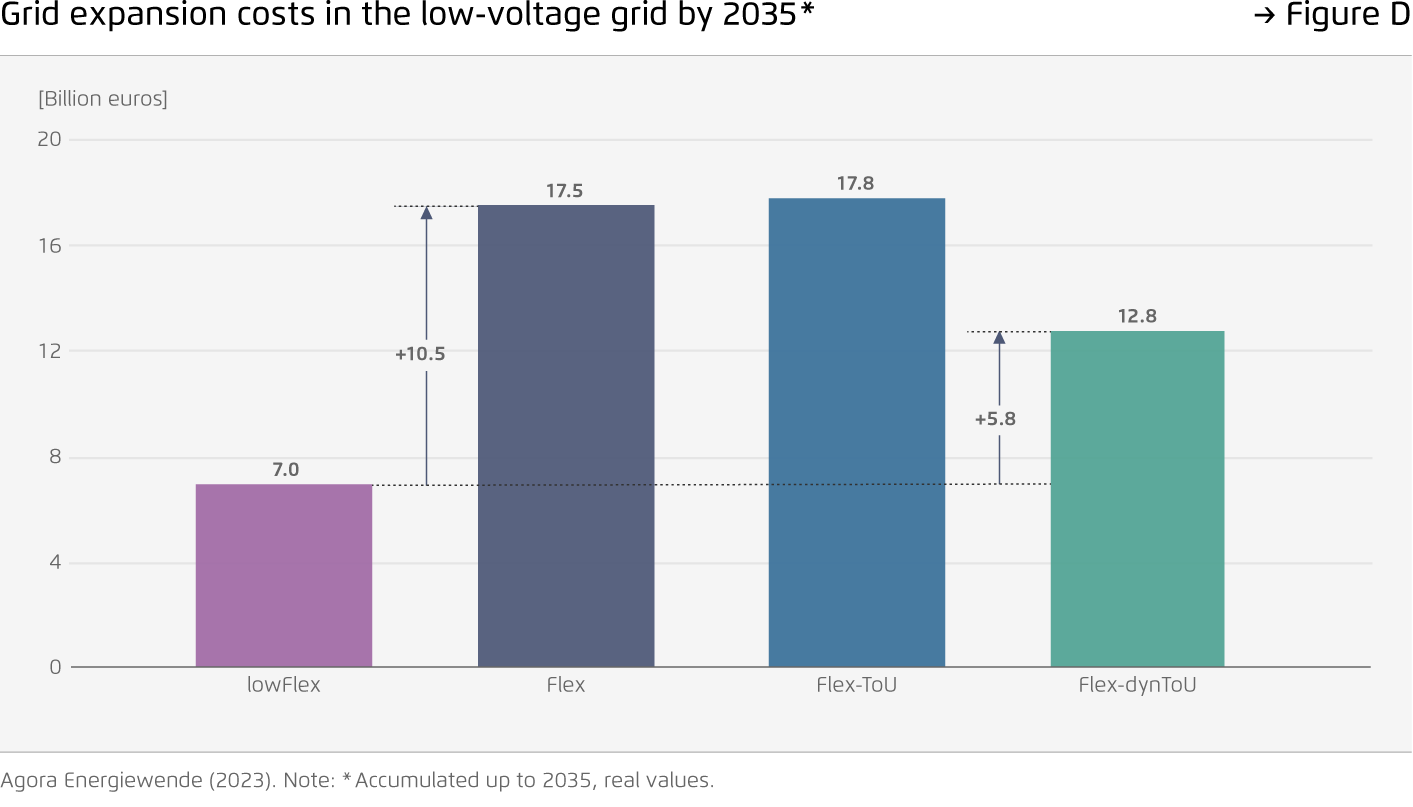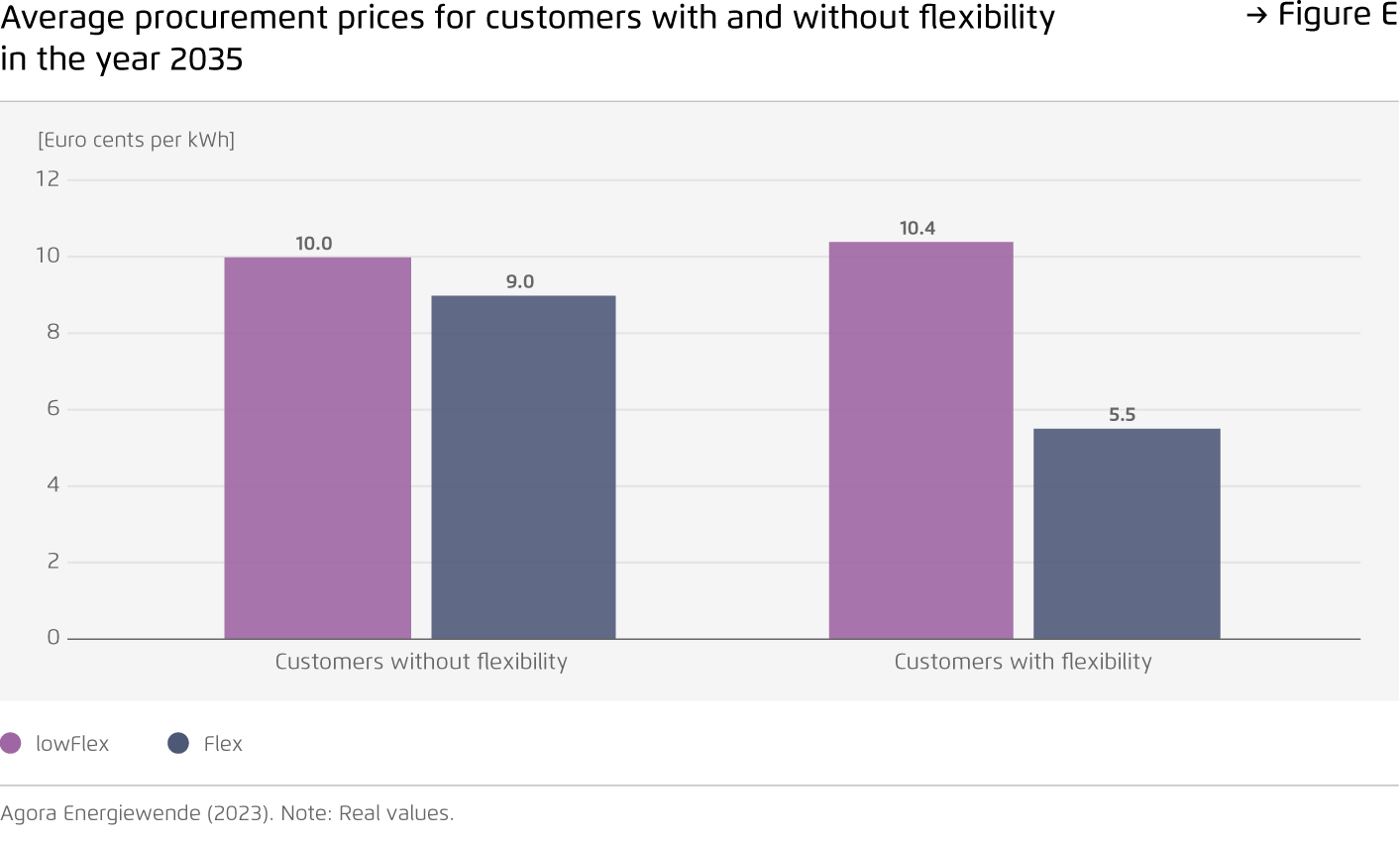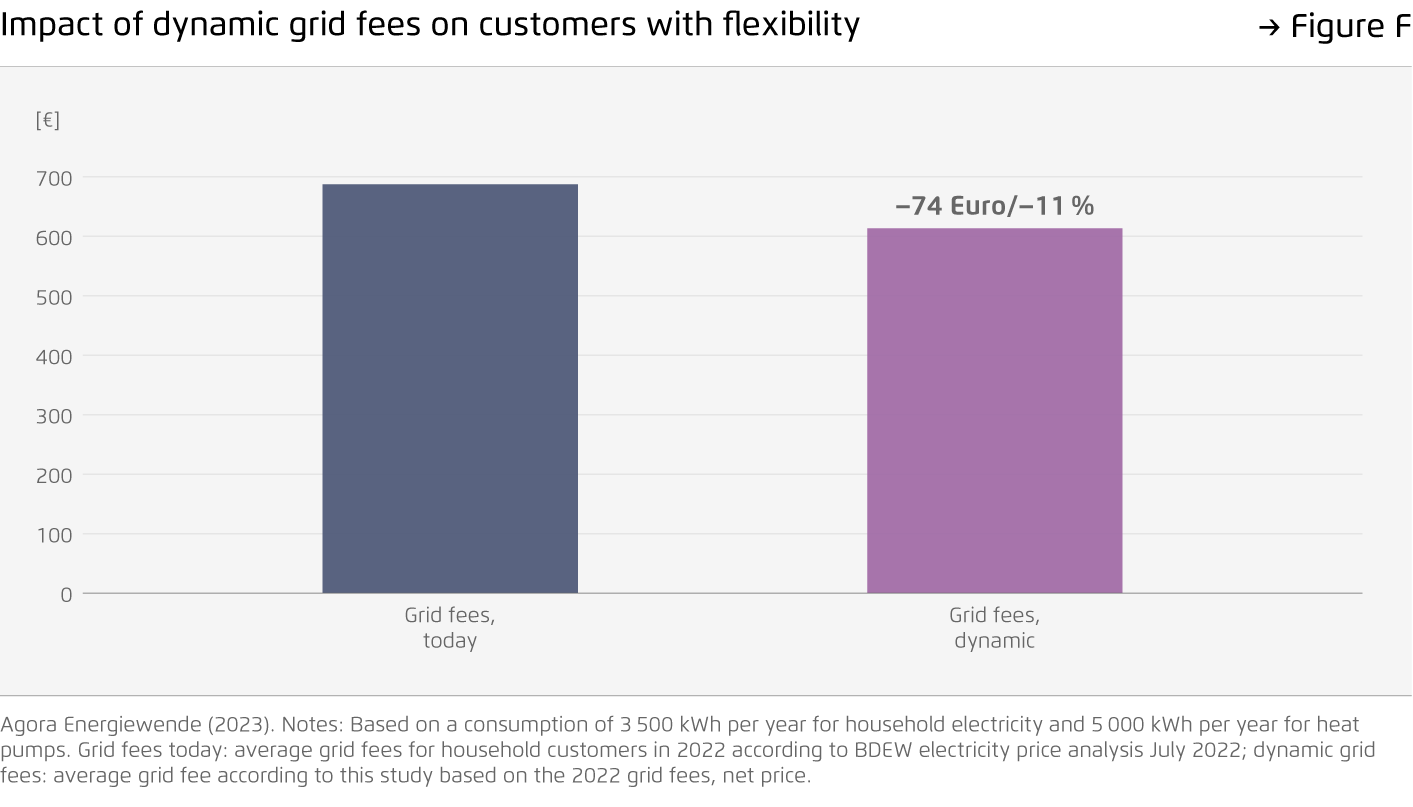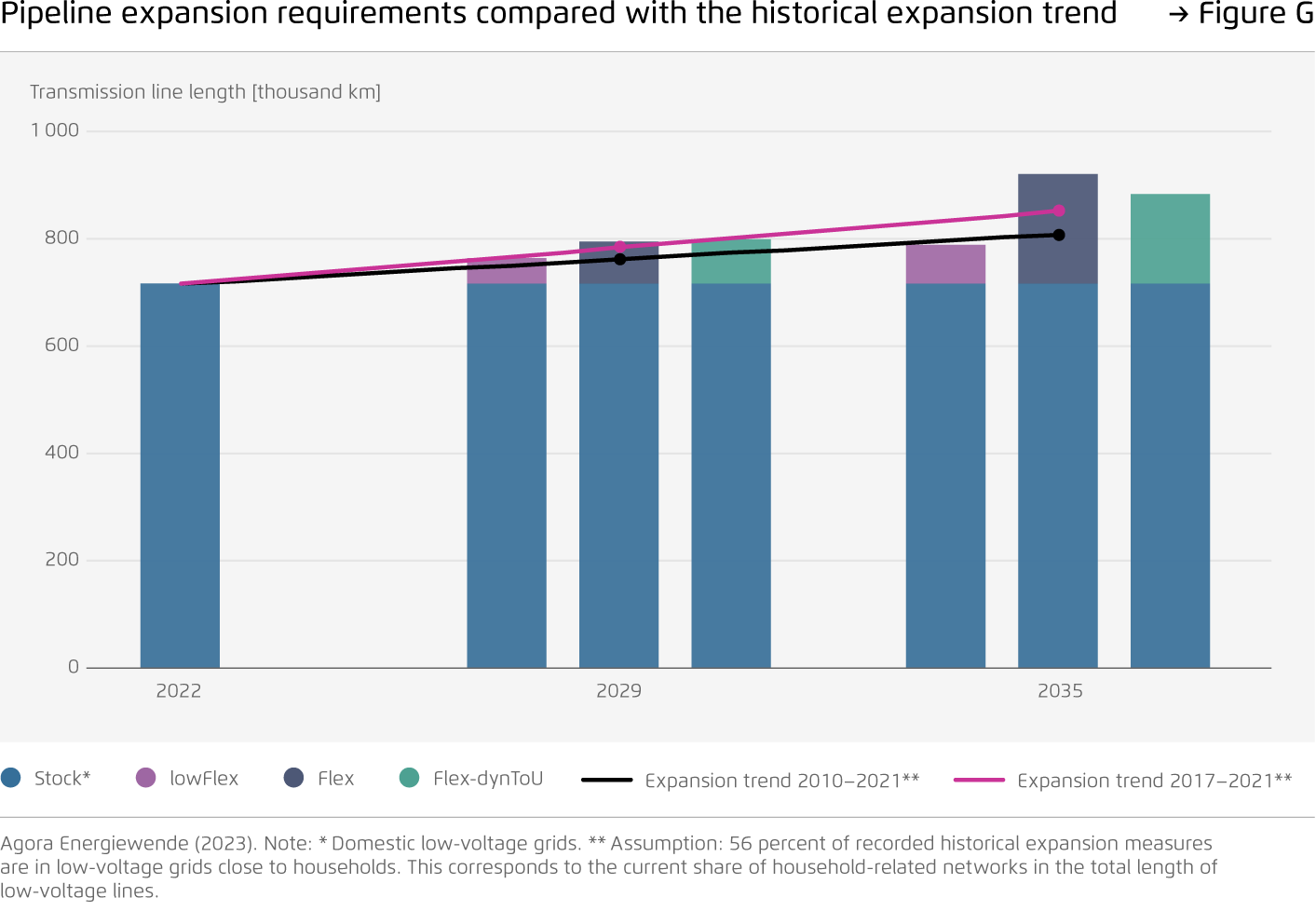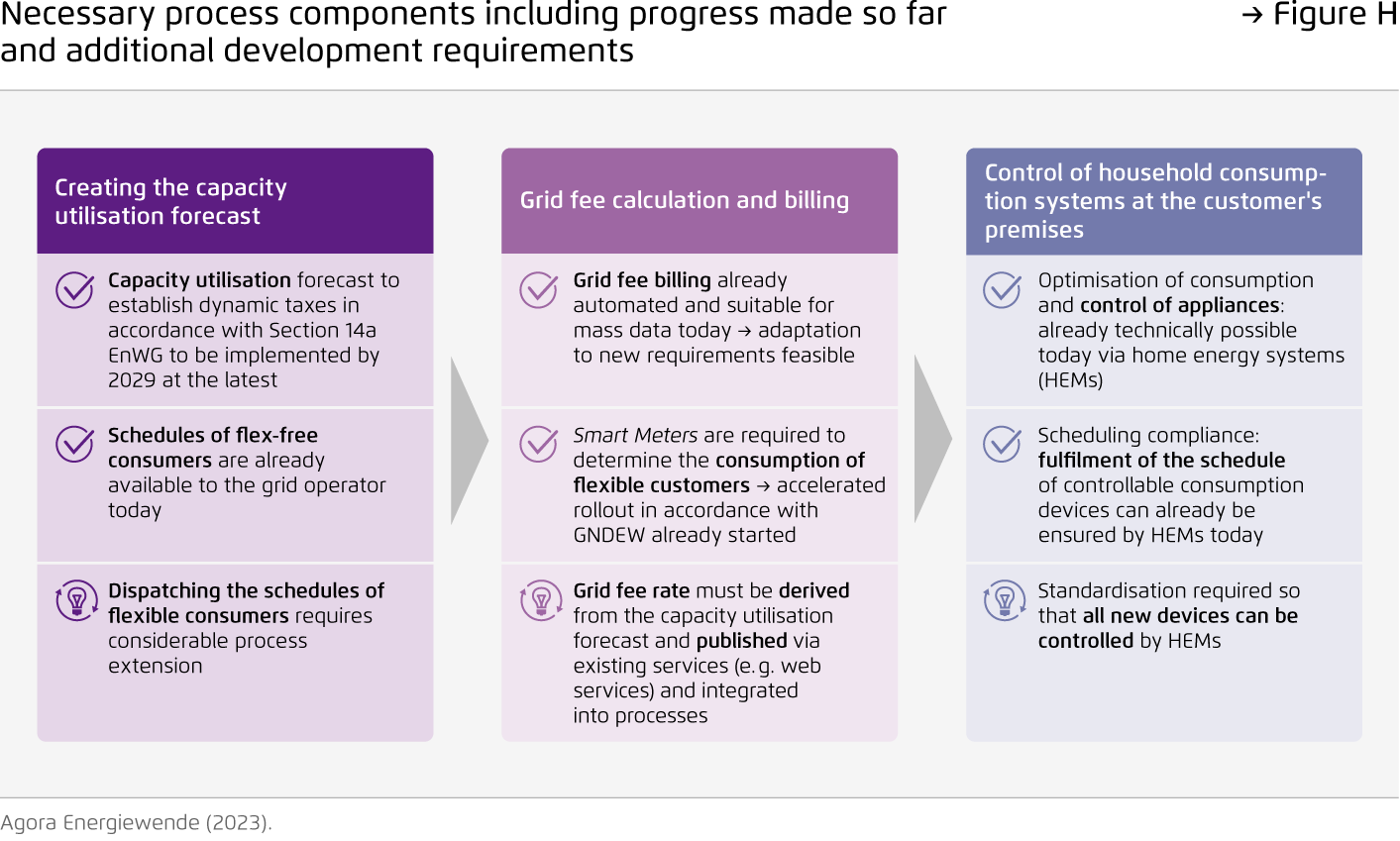-
Electric cars, heat pumps and home energy storage systems could make 100 terawatt hours of electricity demand more flexible in 2035, saving the electricity system 4.8 billion euros in that year alone.
This electricity volume corresponds to 10 per cent of total electricity consumption. By swiftly adapting and automating their operation, millions of these demand-side flexibilities can contribute to the cost-effective integration of renewable energies. However, without a reform of the electricity tariffs, household demand-side flexibilities could significantly increase the strain on electricity grids.
-
Dynamic electricity tariffs (inc. dynamic grid feeds) activate household demand-side flexibility while simultaneously reducing the need to expand the electricity grids.
These tariffs combine dynamic electricity prices and dynamicgrid fees. The electricity price component indicates whether electricity is currently in short supply or in abundance. The grid fee component reflects the local grid utilisation. Dynamic grid fees thus mitigate load peaks in the grid, making the current pace of grid expansion feasible.
-
The digitalisation of the distribution grids enables the introduction of dynamic electricity tariffs (including dynamic grid fees).
The growing number of smart meters allows electricity demand to be billed at various times. Moreover, distribution grid operators are currently developing a comprehensive system for measuring grid load. The Bundesnetzagentur (German Federal Network Agency) could therefore promptly facilitate the adoption of dynamic grid fees by establishing the necessary framework conditions for grid operators.
-
Consumers save on their electricity bills and can play an active role in shaping the energy transition.
By automatically adjusting their consumption, an increasing number of households can influence their own electricity costs. Households with dynamic tariffs can save 600 euros per year in the long term and at the same time contribute to the success of the energy transition. Customers without the option of load shifting also benefit from lower electricity prices overall and improved grid utilisation.
This content is also available in: German
The benefits of energy flexibility at home
Leveraging the use of electric vehicles, heat pumps and other forms of demand-side response at the household level

Preface
Wind and solar power plants will play a central role in the future of our power systems. However, only with sufficient system flexibility can their fluctuating generation reliably meet a growing demand for electricity.
Driven by the electrification of the heating and transport sectors, many millions of heat pumps, home storage systems and electric vehicles will become a part of the German power grid in the coming years. What they all have in common is that they can adapt their electricity requirements at short notice, i.e., provide flexibility. They have significant potential: by the end of this decade, their capacity will far exceed today's annual peak load.
The calculations in this study show that flexible demand-side response at the household level can coordinate supply and demand very efficiently. This flexibility can not only reduce emissions, but also reduce the need for state subsidies and ultimately decrease electricity prices for everyone.
For this to succeed, the appropriate price signals must reach the households in question. This study addresses this issue by examining different tariff models, considering their effects on the overall system, electricity grids, and costs for households. Throughout the study, practical feasibility for both grid operators and customers remains a central consideration.
Key findings
Bibliographical data
Downloads
-
Summary
pdf 1 MB
The benefits of energy flexibility at home
Leveraging the use of electric vehicles, heat pumps and other forms of demand-side response at the household level
All figures in this publication
Development of household demand-side flexible consumption facilities
Figure A from The benefits of energy flexibility at home on page 6
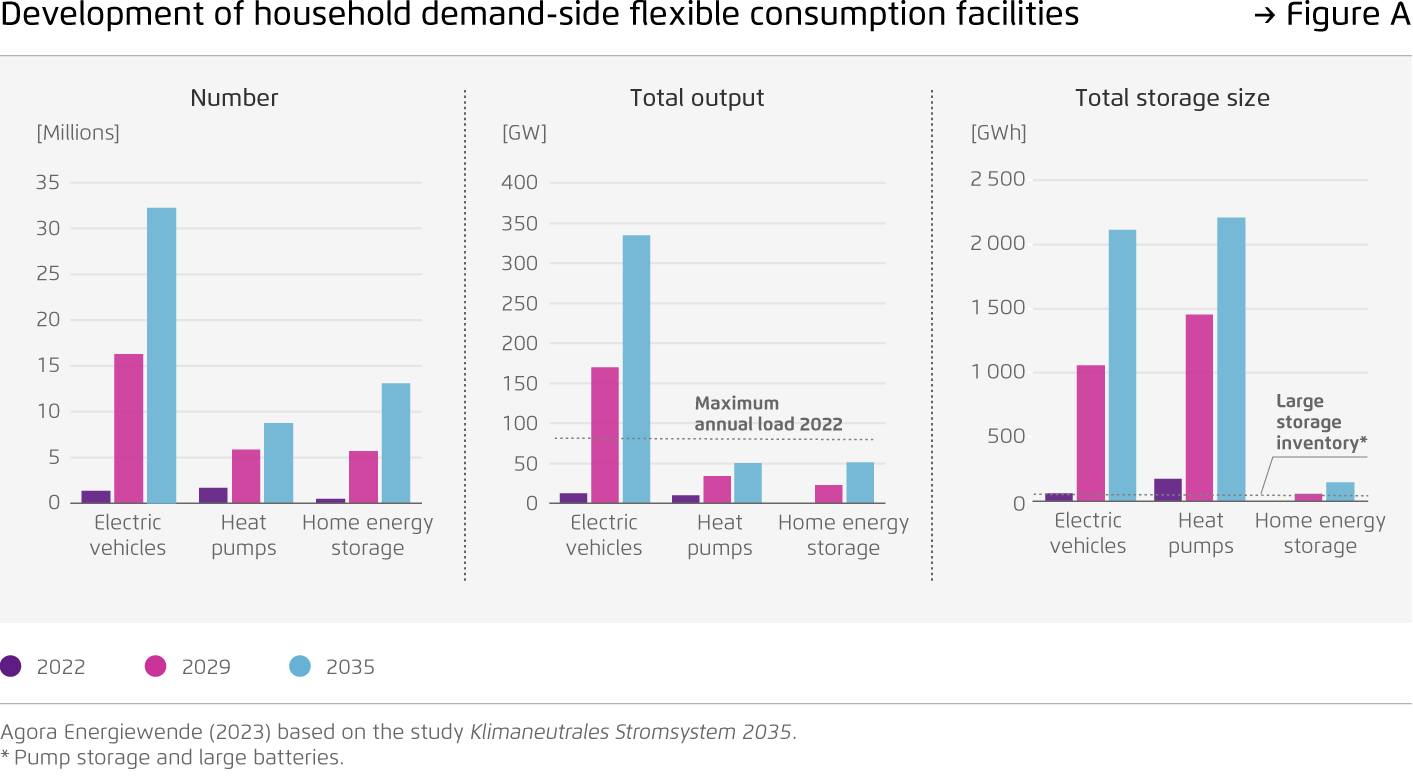
Total load profile of flexible consumption facilities in 2035 averaged over one day
Figure B from The benefits of energy flexibility at home on page 10
